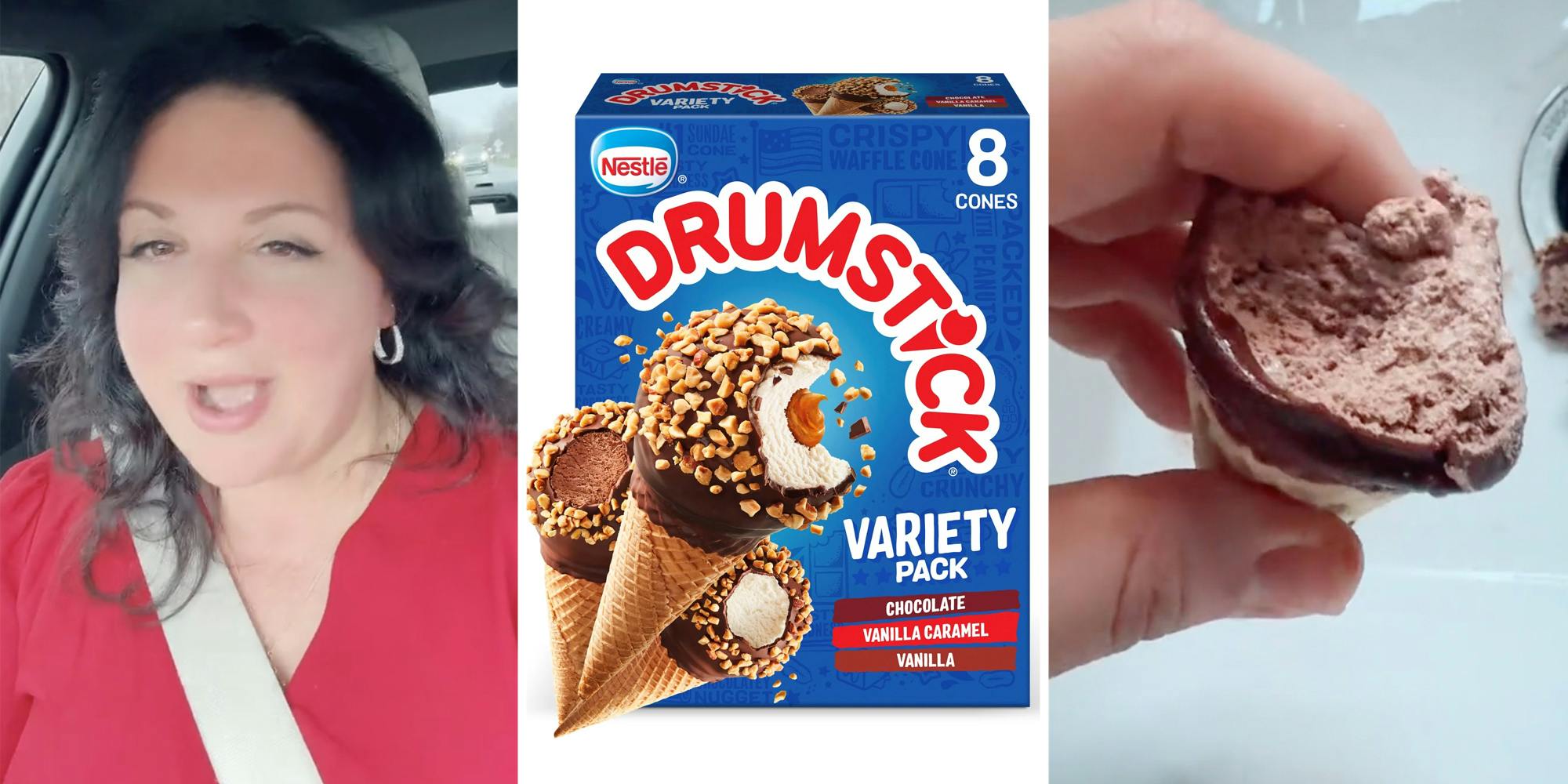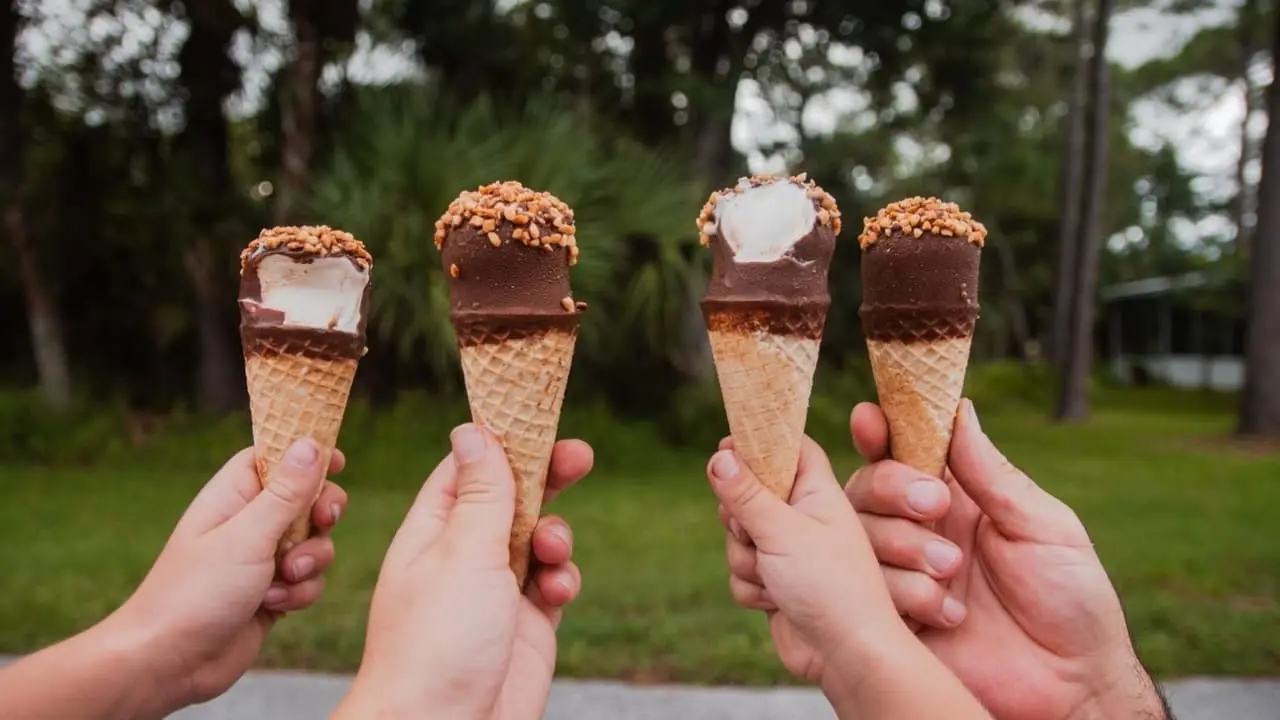In the ever-evolving world of frozen treats, one particular ice cream has been catching eyes not just for its taste but for its curious resistance to melting. Drumstick ice cream, a longstanding favorite from Nestlé, has sparked a flurry of discussions and theories on TikTok, where enthusiasts are deeply invested in uncovering the secret behind its slow melting process.

The Biomedical Engineer’s Insight on Drumstick’s Unique Composition
The conversation around Drumstick’s peculiar melting behavior recently gained a scientific edge thanks to Savannah, a TikTok creator who doubles as a makeup artist and a biomedical engineer with a specialization in materials.
On April 13, she took to the platform to address and debunk the myths circulating about this popular snack.
“I’m on the side of TikTok where people are speculating why Drumsticks do not melt. And as a biomedical engineer with a concentration in materials, I want to explain why,”
Savannah shared in her video, simplifying the complex science into an accessible explanation. According to her, the answer lies in the formulation of Drumstick cones compared to regular ice cream. “The short answer,” she reveals, “is the way that the Drumstick is formulated versus regular ice cream.”

Drumstick Ice Cream: The Secret Ingredient
Drumstick cones, which were first invented in 1928, are classified not just as ice cream but as a ‘frozen dessert.’
This subtle distinction is key to understanding their structure. Unlike traditional ice creams, Drumstick and similar frozen desserts contain higher levels of emulsifiers—chemical additives that stabilize the mix of fats and water, essential for maintaining the dessert’s shape and preventing a quick melt.
Savannah elucidates, “Emulsifiers encourage the suspension of one liquid in another,“ a function critical in food products ranging from ice cream to salad dressings. In Drumsticks, this means an enhanced capacity to keep their structural integrity intact, hence their ability to resist melting under normal conditions.
Dispelling Myths and Concerns
Amidst the viral fascination with Drumstick’s melting resistance, some myths have also surfaced, including alarming claims about the safety of emulsifiers. Savannah tackles this head-on by highlighting a common, all-natural emulsifier: tapioca starch.
“It’s the very thing that makes up your boba pearls,” she points out, reassuring viewers about the natural occurrence and safety of such additives in everyday foods.
I’ve seen multiple videos of ice cream not melting right after a few hours but this video is after 22 hours so I need to share
After 22 hours this is what this Drumstick Ice Cream looks like…
America, what are they putting in our food?? Where is our regulation agencies?! pic.twitter.com/IyHtueIDg6
— Wall Street Apes (@WallStreetApes) April 11, 2024
Drumstick Joins the Viral Trend
The curiosity about Drumstick’s melt-resistant nature isn’t just limited to food enthusiasts and scientists. The brand itself has playfully engaged with the topic. Earlier in February, Drumstick released a TikTok video that humorously commented on the slow-melting phenomenon.
In the video, a Drumstick cone sits stubbornly intact next to a woman working on her laptop, even resisting melting when subjected to a hand-held torch. The video captioned, “*eats it instead*,” perfectly encapsulates the light-hearted approach the brand has taken in response to the viral attention.
The Science Behind the Sweetness
Through the blend of social media engagement and scientific insight, the mystery of the Drumstick’s slow melt has not only been a topic of intrigue but has also highlighted how traditional snack foods can intersect with modern science to create viral phenomena.
As Savannah’s explanation goes viral, it serves as a reminder of the fascinating complexities hidden in everyday treats, making Drumstick cones a topic as rich in science as they are in flavor.










